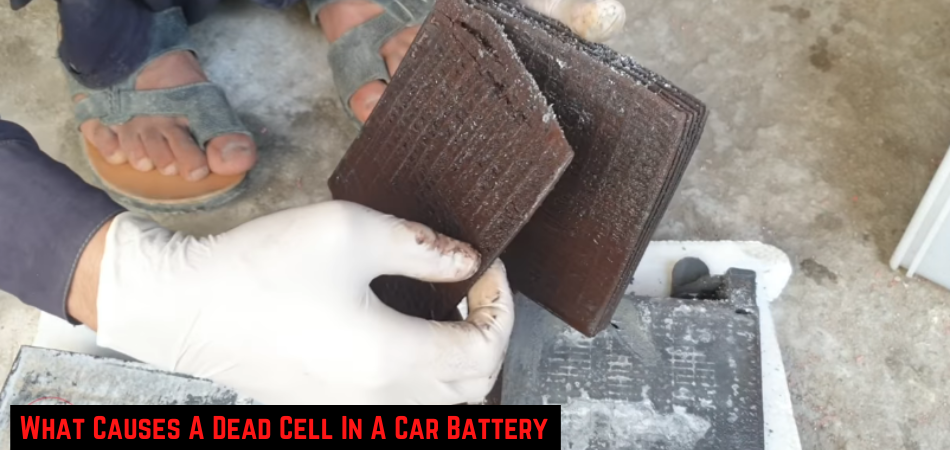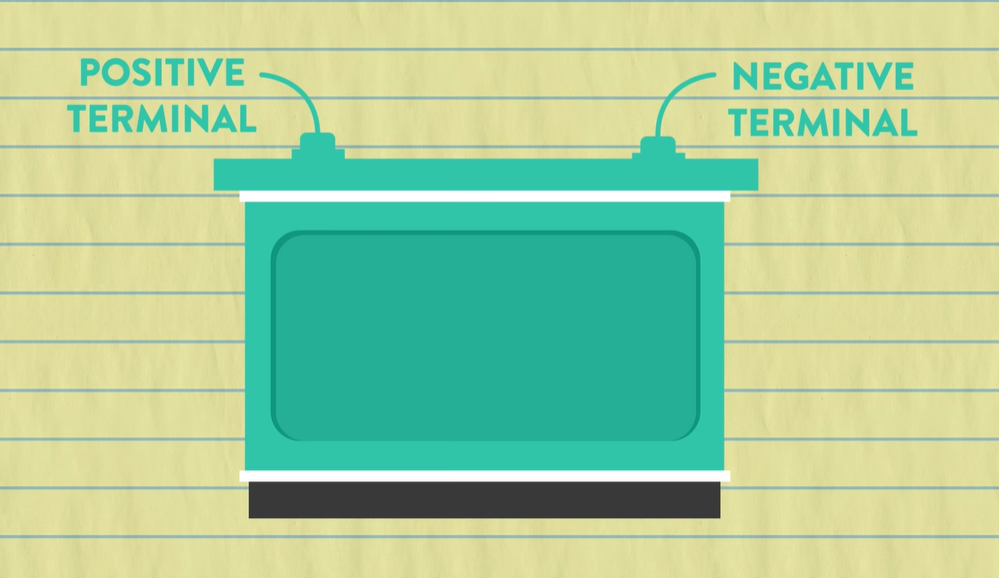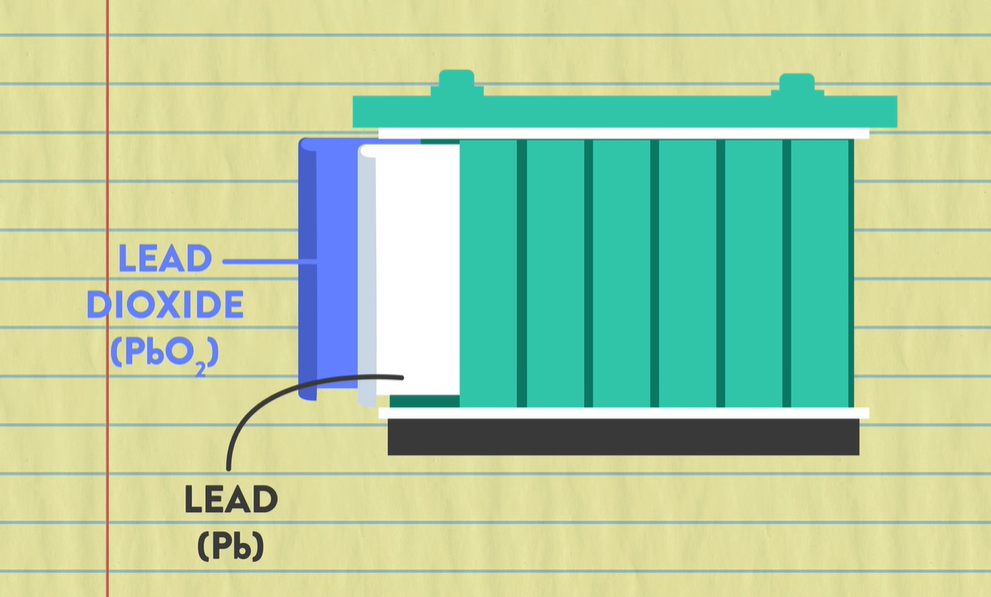Hi, I'm Luis Johnson, an automobile technician, and power equipment professional. By profession, I'm a businessman and operate a car workshop. I have created this...Read more
A 12V battery has 6 cells inside, each containing 8 lead plates that react to each other, producing current. The chemical reaction between them makes up a nominal cell voltage of 2.1 volts in each cell.
When the lead plates cannot discharge and get rid of produced Lead Sulfate (PbSO4), the cell technically dies. That often shows as a dried cell among the good cells.
But, what causes a dead cell in a car battery in the first place?
The main reason for a dead car battery cell is its lifespan. Each battery has a lifespan where the lead plates can actively react and sustain discharges from the positive terminal to the negative. When the plates can no longer sustain such a reaction, it dries out and dies.
To understand it better, you need to know how the lead plates work to charge and discharge. Let’s talk about it in detail, and we’ll also discuss the symptoms of a dead battery cell, and how to repair a dead cell.
What Is A Dead Cell In A Car Battery?
Batteries charge up using a chemical reaction between two plates named Lead (Pb) and Lead Dioxide (PbO2). These plates stay dipped inside an electrolyte mixture of 65% water (H2O) and 35% Sulfuric Acid (H2SO4).

All the positive plates connect in series and so do the negative plates. This produces a collective current of 12 to 14 volts. When one cell is defective, the whole connection collapses. So, a dead cell means a dead battery.
The primary goal of this reaction is to produce a current that needs a complete circuit from the positive end to the negative. If one plate cannot react to the free-floating hydrogen ions (H) and sulfate ions (SO4) in the electrolyte, that is a dead or defective cell.
What Causes A Dead Cell In A Car Battery?
If you’ve ended up with a dead cell in your car battery, it could be a result of several phenomena. As you now know the technical process of how things happen within the battery cover, now let’s see what causes a dead cell in the car battery:

Battery Lifespan
To help you better understand the lifecycle of the battery and how it charges or recharges, let’s give you a complete rundown of the process. This will help you understand why the age of a battery can result in a dead cell or all cells.

Positive charge
As mentioned earlier, the hydrogen-free floats in the electrolyte inside a battery. The hydrogen ions come in contact with the lead dioxide (PbO) plates and yield lead oxide. That’s called a positive charge.
Negative charge
Another free-floating thing in the electrolyte is sulfate ions. They interact with the lead surface and form lead sulfate. That is called the negative charge.
When you consume the battery power, you’re consuming this lead sulfate’s negative charge. But, when you eat up all the charge, the alternator comes into play and reverses the process so that the battery charges again.
When the lead plates are coated with lead sulfate and the sulfuric acid is diluted in the water because of continuous reaction, the battery can’t produce as much power as before. That’s when you start to get less backup or output from a battery.

The final output is a dead cell or a completely dead battery.
This leads to the question: What is the lifespan of a car battery?
Well, depending on the quality of the battery you’re using, the lifespan can be 3 to 8 years before it dries out, and you need a new battery.
Contamination
If the battery is fairly new and didn’t cross the lifespan boundary but ended up with a dead cell, contamination could be the reason. Chemical contamination happens mostly for lead sulfate crystals (Corrosion) and emitted hydrogen gas.
When you clean battery terminals for corrosion or simply dirt and dust, you might end up running water into the cells. The running water can push the hydrogen and foreign objects, especially things like soda into the electrolyte.
This happens mostly if the cell covers are not properly sealed or defective.
Bad Alternator
A bad alternator can cause a battery cell to go bad in some cases. If you have a bad alternator diode, it won’t be able to keep the balance while recharging the battery. So, if the battery isn’t that old to go bad, be sure to check for a fault in the alternator.
This is also true for a bad voltage regulator that keeps the balance between the produced current from the alternator to the battery. The battery is 12V, floating up to 14v and the regulator keeps the balance from the current produced by the alternator.
Swollen battery
A swollen battery can result in a cell dry out, even full battery death. The main reason for a swollen battery is overcharging when the heat and hydrogen gas cannot release properly. Overcharging also can cause corrosion which is another reason for a dried and dead cells.
Temperature
The temperature in the battery is another reason that can cause a dead cell in a car battery. If the temperature goes below 10° C or rises above 100° C, it can cause the battery cell to die. Essentially, over-temperature vaporizes the water and leads the battery cell to eventually dry and die.
When you have the water level low, you need to refill the water. The ideal ratio is 65% water and 35% sulfuric acid.

Symptoms Of A Dead Cell In The Car Battery
When your car battery ends up with a dead cell, how do you understand if it’s truly dead? Let’s talk about the symptoms you’ll see when a car battery cell is dried or dead:
Output: No run
With a dead battery cell, you won’t get any output from it, because one dead cell means a completely dead battery. If the battery has one dead cell, you won’t get any output from the battery when you rotate the ignition.
Physical: Dried out
Another way of telling if a car battery cell is dead is by inspecting it physically, and it’s fairly easy to do. Open the cell cover caps, use a flashlight, and see if the plates are dry and visible.
However, only dried-out plates don’t mean it’s dead because they can also mean a low electrolyte level. If the plates are completely dried and have developed oxidation, that means you have a dead battery.

How To Repair Or Solve A Dead Cell In A Car Battery?
When you have a dead cell battery, the best option for you is to replace it with a new battery. However, if you want to use the existing one, repairing a car battery with a dried and dead cell can be an option.
Follow this video guide if you’re planning on repairing the existing battery and want to use it further:
If this method doesn’t work, there’s another option to try cutting the cover, taking the cell out, repairing it, and putting it in again. But that would be a hell lot of work and will need a lot of expertise and tools which you don’t want to get yourself into.
You May Also Interested in: How to Tell If a Deep Cycle Battery Is Bad?
Final words
The ideal thing to do with a car battery when you have a dead cell in it is to consider its age. If it’s beyond the age it was supposed to serve you, this is pretty normal to have dead battery cells.
You should replace the battery after it’s done serving you the time it should. If you have a dried-out cell and not a dead one, you can just refill the water that we’ve talked about earlier.

Hi, I'm Luis Johnson, an automobile technician, and power equipment professional. By profession, I'm a businessman and operate a car workshop. I have created this site Batteryquery to help people purchase the right battery for their vehicles. The reason behind creating this site is to help my customers purchase the right car battery who often purchase the wrong one due to their lack of knowledge.
More Posts